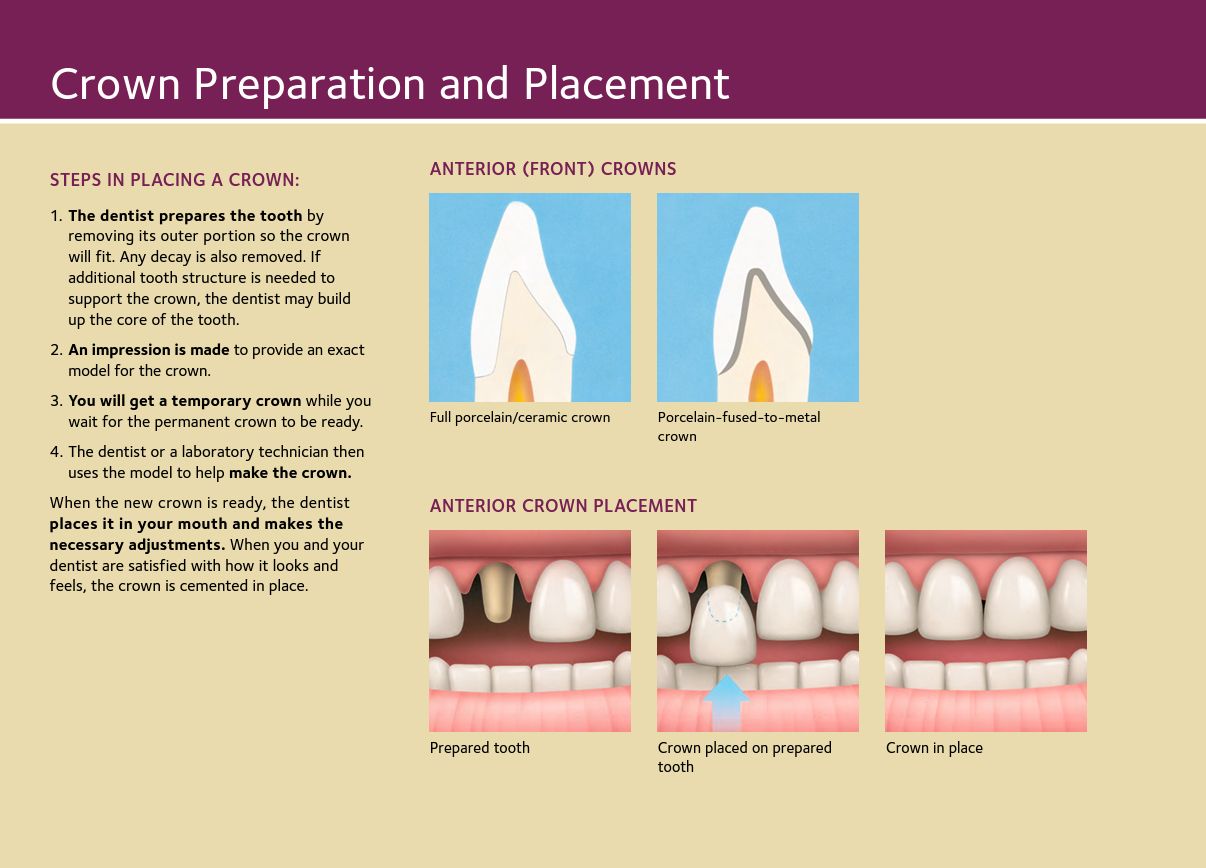The preparation for a metal ceramic crown requires significant tooth reduction to provide sufficient space for the restorative materials.
Tooth preparation for metal ceramic crown.
Because there is no metal to block light transmission they can resemble natural tooth structure better in terms of color and translucency than can any other restorative option.
Veneer porcelain mimics 3 extention varies natural teethnatural teeth 4.
A video by crowns bridges depart.
When preparing a tooth a systematic and organized approach helps to ensure the prep is correctly shaped.
Ceramic preparation is comparable to that of prepar typical indications are similar to those for ing a posterior tooth for a complete cast crown.
This video is a demonstration for dental students showing the steps of tooth preparation to receive a metal ceramic crown.
Metal ceramic crown preparation 2.
To be successful a metal ceramic crown preparation requires more tooth reduction wherever the metal substructure is to be veneered with dental porcelain.
Consequently much tooth reduction is necessary and the metal ceramic preparation is one of the least conservative of tooth structures fig.
The tooth should have a relatively intact coronal structure that will provide sufficient support for the restoration particularly in the incisal area.
The need for superior re the preparation for a.
The crown must be sufficiently thick enough to hide the metal substructure and the opacious porcelain used to mask this alloy.
Historically attempts to veneer metal restorations with porcelain had several problems.
All ceramic or all porcelain dental crowns provide better natural color match than any other crown type and may be more suitable for people with metal allergies.
All ceramic crowns can be used for.
Tooth preparation for metal ceramic crowns.
The porcelain veneer must have a certain minimum thickness for esthetics.
Extensive tooth destruc tion as a result of caries trauma or existing previ ous restorations that precludes the use of a more disadvantages conservative restoration.
To achieve better esthetics the facial margin of an anterior restoration is often placed subgingivally which increases the potential for periodontal disease.
The metal should be 0 3 to 0 5 mm thick if it is a noble metal alloy while a metal coping made of the more rigid base metal alloys can be thinner to 0 2 mm.
The preparation must be designed to provide the correct support for the porcelain along its entire incisal edge unless an all ceramic crown with a strong core i e.




























